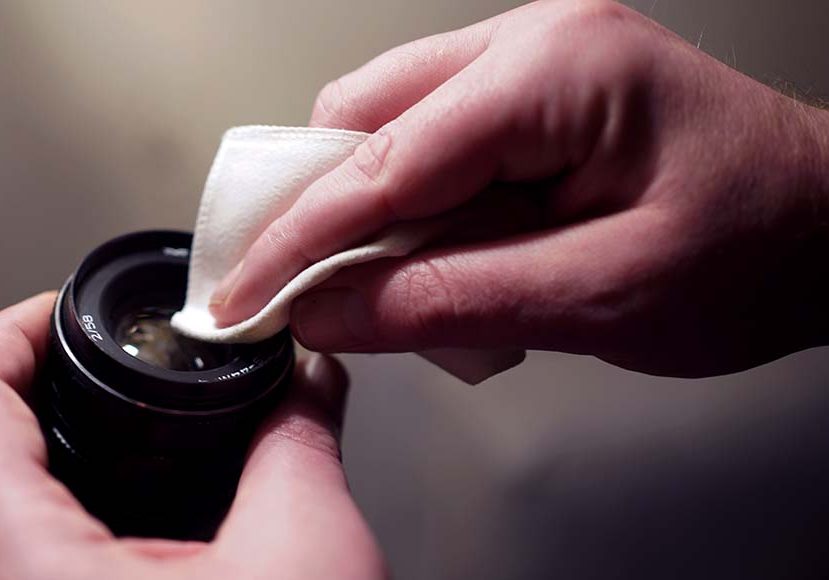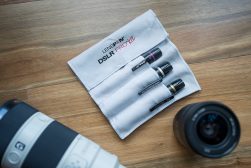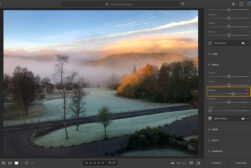
How to Prevent and Fix Camera Lens Haze
Explore effective strategies to prevent and fix camera lens haze, ensuring your photography remains clear and unaffected by this common issue.
Learn | By Andrew Dilks
This guide will teach you how to prevent and fix camera lens haze.
Hazy images can be impossible to salvage in post-production, leading to wasted time and effort.
I’ve had personal experience with this issue, and this tutorial will walk through the methods for removing residue from lens surfaces.
What Is Haze on a Lens?
Camera lens haze is a common issue that can ruin a great photograph, and results when a layer of clouding and haze forms on the surface of the lens.
Moisture, oil, and dust accumulation on the lens surface and other lens elements over time is one of the primary causes of lens haze.
Additional factors that can create haze come from the environment, such as high temperatures and humidity impacting glass surfaces.
The lens element is also susceptible to air condensation, which can affect the front or rear elements of a lens and require cleaning.
Lens coatings, while effective for reducing reflections and enhancing light transmission, can also influence lens hazing.
Referred to as “coating degradation,” this occurs when the coating deteriorates through UV radiation and humidity, creating haze on the lens.
Fortunately, regular cleaning of lenses and proper handling during shoots can ensure that the lens is protected inside and reduce lens haze.
While old lenses are more prone to haze, newer models feature resistant coatings that reduce haze and ghosting and lens flare.
What Is The Effect of Lens Haze on Images?
If you’ve ever taken a photograph and noticed foggy patches or a generally hazy appearance, the cause is likely to be lens haze.
As microscopic particles gather on the lens elements, the clarity and overall sharpness of the image are degraded, along with a decrease in contrast.
Since the haze scatters light across the frame, the resulting image can appear washed out and feature unwanted artifacts or distortions.
So, what should you look for if you’re concerned your lens has been damaged and needs cleaning to prevent the issue?
Here are some examples of images that have been degraded due to haze, so you know what to look for if you need to address this problem.
Examples of Images With Lens Haze
One of the most common results from lens haze is a softening of the image and a reduction in contrast that gives the image a washed-out appearance.
This can be seen in the example given in this video, showing a garden photograph captured on a 50mm lens with an aperture of f/1.8
As can be seen from the image, shooting into the light source increases this effect and accentuates the lack of contrast in the light-dominant areas.
Stopping down to an aperture range is one method that can be used to reduce the issues with contrast that lens hazing can create.
How Much Do You REALLY Know About Photography?! 🤔
Test your photography knowledge with this quick quiz!
See how much you really know about photography...

While this isn’t optimal and means you can’t take advantage of the lens’s wide aperture, it’s a temporary fix that doesn’t make your lens worthless.
Is There a Way to Remove Lens Haze Safely?
While lenses can suffer from haze if not stored in optimal conditions, the problem can be rectified in a few simple steps.
No expensive cleaning products are required, and the process can be easily integrated into a basic regime of photography equipment maintenance.
There are also several ways you can properly store and maintain your collection of lenses to prevent the problem from occurring and save time on cleaning.
By avoiding touching the glass surface and transferring oil and grease onto it, while also using lens hoods, the chances of haze are reduced.
Let’s break down in more detail what you can do to prevent hazing in your lenses, and methods for fixing it if your optics are impaired.
How to Prevent Lens Haze
Prevention is better than the cure, and great maintenance and storage will ensure you don’t have to worry about fixing hazing in your images.
Here are some tips to follow if you want to minimize the chances of lens haze occurring:
Understanding your lens’s weaknesses
Different lenses have different degrees of susceptibility to hazing, and some glass types are more prone than others to oxidation.
Likewise, older lenses will have more time for their coatings to deteriorate, and you should take extra care to keep them away from moisture and dampness.
Store your lenses at a constant temperature
When not using your lenses, they should be stored in a dry environment at a constant moderate temperature, free from humidity.
If you’re shooting in a location with high humidity and heat, try to bring your gear up to this temperature slowly, so it adjusts more gradually.
Use lens hoods
Lens hoods are designed to keep the front element of your lenses protected from the elements and keep them dry in certain conditions.
It also reduces the chances of accidental smudging and passing grease and dirt onto the glass, which can lead to hazing and distortions.
How to Fix Lens Haze
While it’s best to avoid the issue through proper equipment maintenance and protection, sometimes it’s impossible to avoid lens hazing.
If you’re experiencing hazing and need to rectify the issue, you can do this by following these simple steps:
Wipe the lens clean with a microfiber cloth
Regular cleaning should be a part of your maintenance routines, and a gentle wipe with a microfiber cloth will remove smudges and other particles.
You can use household glass cleaner mixed with water, or purchase specific lens cleaning products and dedicated lens cleaning kits.
Use circular sweeping motions and avoid putting too much pressure on the glass since this may lead to accidental damage.
Addressing haze due to Canadian balsam separation
While most modern lenses no longer use Canadian balsam to cement the rear group elements, older models can suffer from hazing due to this process.
Rectifying this can be tricky, requiring unscrewing the lens elements and thoroughly cleaning them before letting them dry.
Separating the elements requires boiling them in water, which may result in cracking, using methylene chloride or soaking them in acetone.
As such, it should only be attempted using cheaper, second-hand lenses that you aren’t worried about losing should the process fail.
Camera Lens Haze FAQs
Should I buy a lens with light haze?
If you’re considering buying second-hand lenses from eBay or other sites for photography gear, some of the items may suffer from a light haze effect.
While you should generally avoid lenses with haze issues, it may be minimal enough not to cause issues when shooting and be easy to resolve in post-production.
Some light hazing around the edges of the lens may be acceptable or could result from cemented elements used in some models.
Is lens haze the same as fungus?
There’s a noticeable difference between image degradation caused by haze and that caused by fungus growth forming on the surface of a lens’s glass.
Fungus can seriously damage your lenses since they eat through the magnesium fluoride coating and release additional spores.
You can clean fungus from your lenses by removing the rear element and sterilizing them with UV light and appropriate cleaning materials.

Check out these 8 essential tools to help you succeed as a professional photographer.
Includes limited-time discounts.













